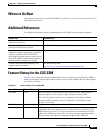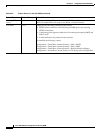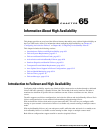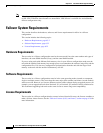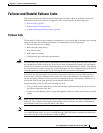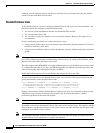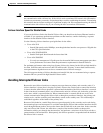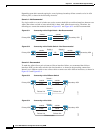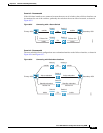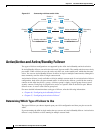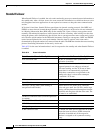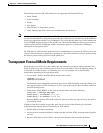
65-5
Cisco ASA 5500 Series Configuration Guide using ASDM
Chapter 65 Information About High Availability
Failover and Stateful Failover Links
Caution All information sent over the failover and Stateful Failover links is sent in clear text unless you secure
the communication with a failover key. If the ASA is used to terminate VPN tunnels, this information
includes any usernames, passwords, and preshared keys used for establishing the tunnels. Transmitting
this sensitive data in clear text could pose a significant security risk. We recommend securing the failover
communication with a failover key if you are using the ASA to terminate VPN tunnels.
Failover Interface Speed for Stateful Links
If you use the failover link as the Stateful Failover link, you should use the fastest Ethernet interface
available. If you experience performance problems on that interface, consider dedicating a separate
interface for the Stateful Failover interface.
Use the following failover interface speed guidelines for the ASAs:
• Cisco ASA 5510
–
Stateful link speed can be 100 Mbps, even though the data interface can operate at 1 Gigabit due
to the CPU speed limitation.
• Cisco ASA 5520/5540/5550
–
Stateful link speed should match the fastest data link.
• Cisco ASA 5580/5585
–
Use only non-management 1 Gigabit ports for the stateful link because management ports have
lower performance and cannot meet the performance requirement for Stateful Failover.
For optimum performance when using long distance failover, the latency for the failover link should be
less than 10 milliseconds and no more than 250 milliseconds. If latency is more than10 milliseconds,
some performance degradation occurs due to retransmission of failover messages.
The ASA supports sharing of failover heartbeat and stateful link, but we recommend using a separate
heartbeat link on systems with high Stateful Failover traffic.
Avoiding Interrupted Failover Links
Because the uses failover interfaces to transport messages between primary and secondary units, if a
failover interface is down (that is, the physical link is down or the switch used to connect the interface
is down), then the ASA failover operation is affected until the health of the failover interface is restored.
In the event that all communication is cut off between the units in a failover pair, both units go into the
active state, which is expected behavior. When communication is restored and the two active units
resume communication through the failover link or through any monitored interface, the primary unit
remains active, and the secondary unit immediately returns to the standby state. This relationship is
established regardless of the health of the primary unit.
Because of this behavior, stateful flows that were passed properly by the secondary active unit during
the network split are now interrupted. To avoid this interruption, failover links and data interfaces should
travel through different paths to decrease the chance that all links fail at the same time. In the event that
only one failover link is down, the ASA takes a sample of the interface health, exchanges this
information with its peer through the data interface, and performs a switchover if the active unit has a
greater number of down interfaces. Subsequently, the failover operation is suspended until the health of
the failover link is restored.



